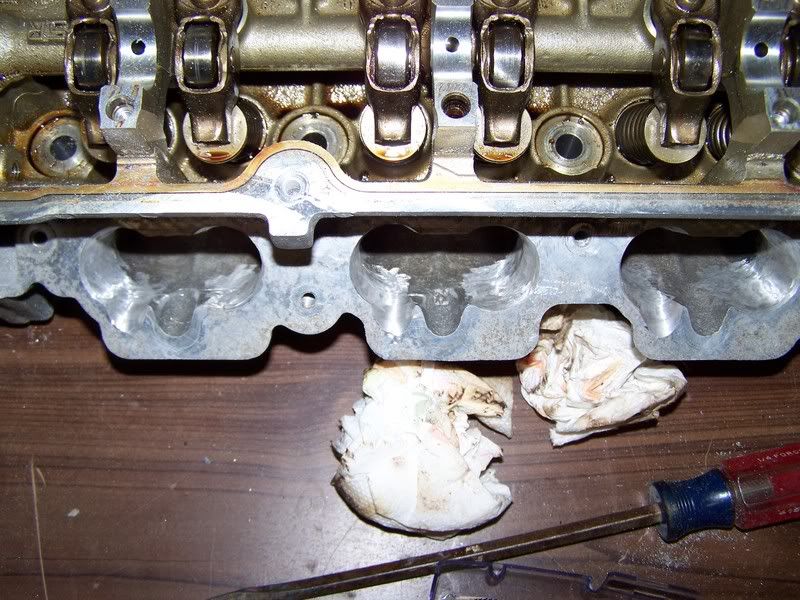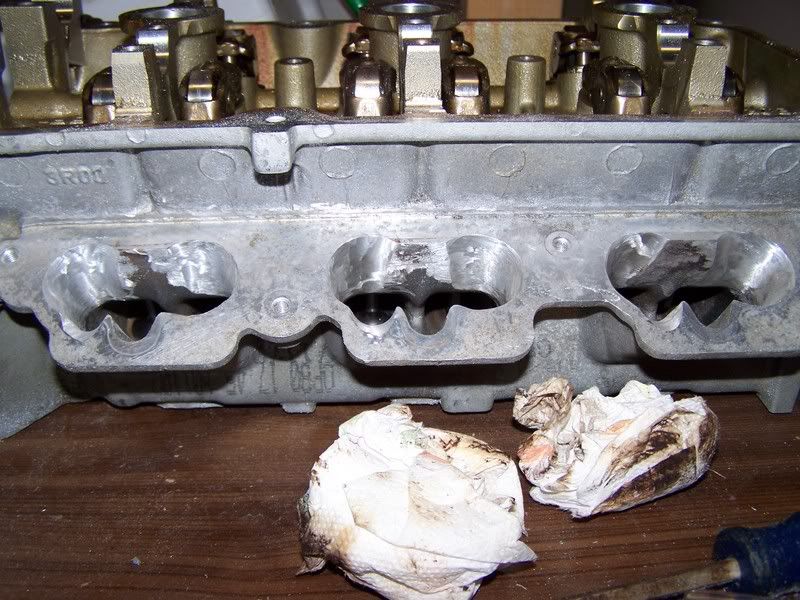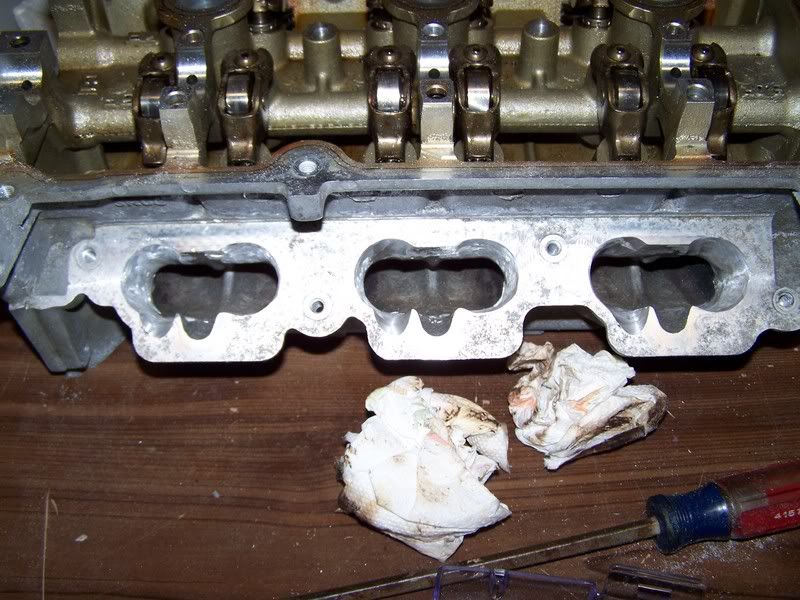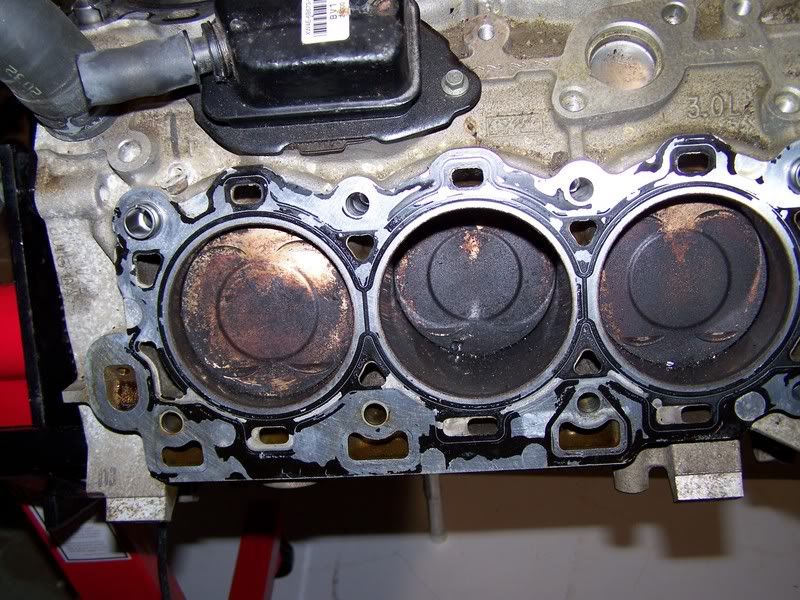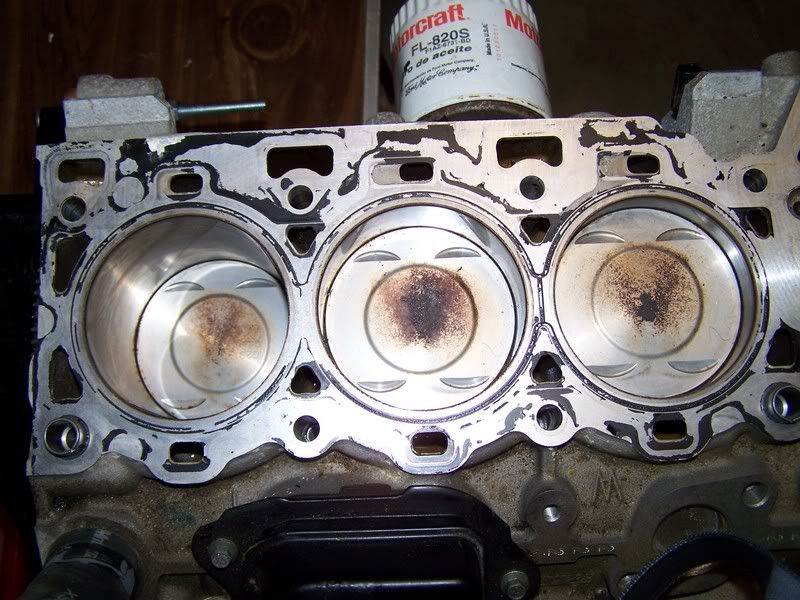Looking good. Makes sure when you cleaned the pistons you didn't leave any grime down on the top compression ring on the edges of the pistons. Blow it out with solvent and compressed air if you haven't already. Then use a little bit of light motor oil and put a little bit on edges of the piston, use a rag with some oil and wipe the cylinder wall a little bit and turn the engine through by hand. Any trapped particles will stick to the cyl walls with the oil that you can wipe up with the oiled rag, and when you are done it will be clean and rust proofed as well as have a residual oil film in the crosshatching. If you are changing your rod bearings to Clevite77, AND I recommend that you do so, then just pull each piston out and clean them individually, inspect your rings, re-oil them, put in new rod bolts, bearings, and reassemble one by one. This is the best way to insure you have a perfectly clean and durable engine.
Also if the ring edges have any discoloration or pits, you will see it and for another $100 you can slap new factory rings in it. No honing should be done and the rings will seat in fine.
